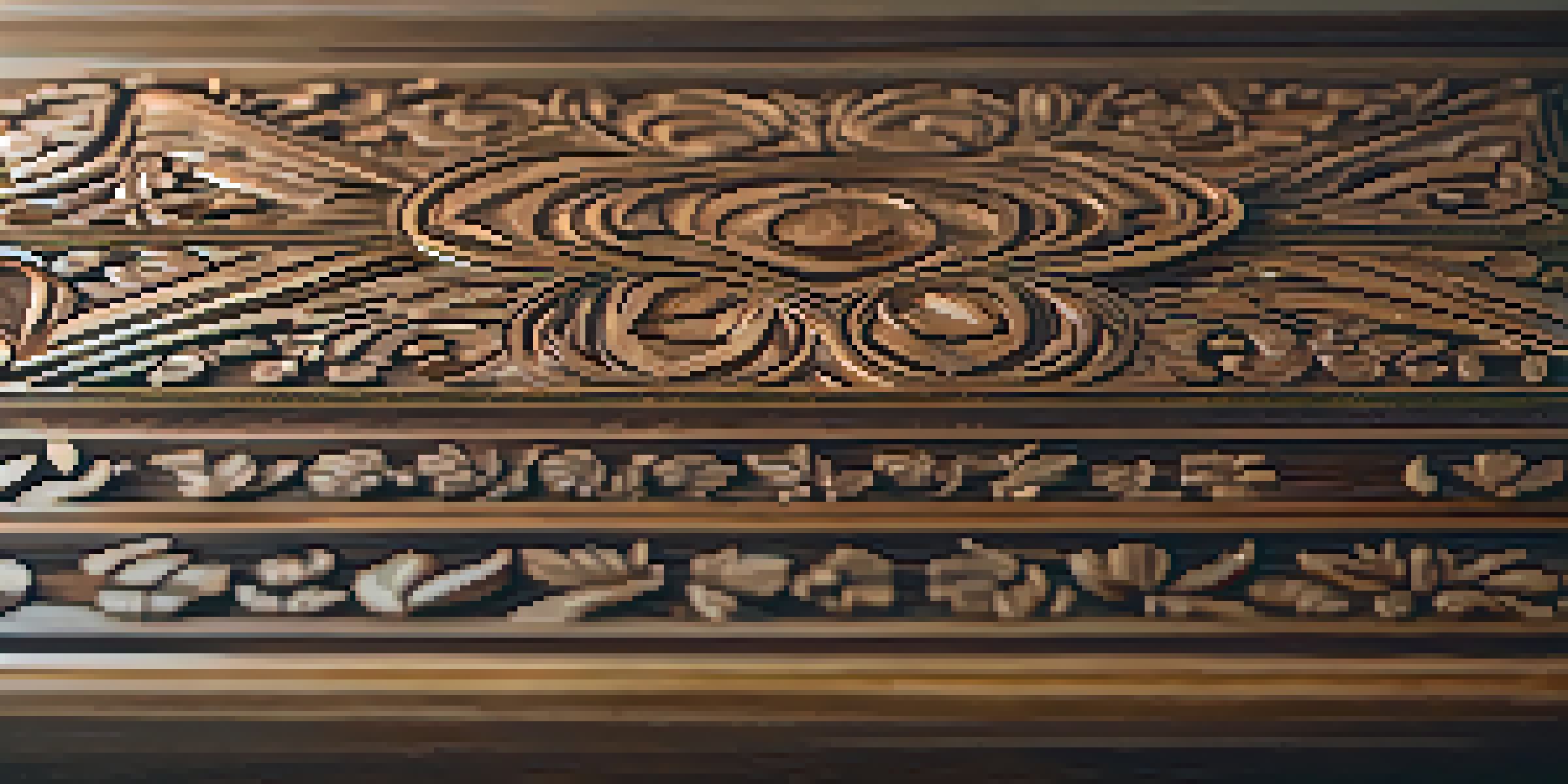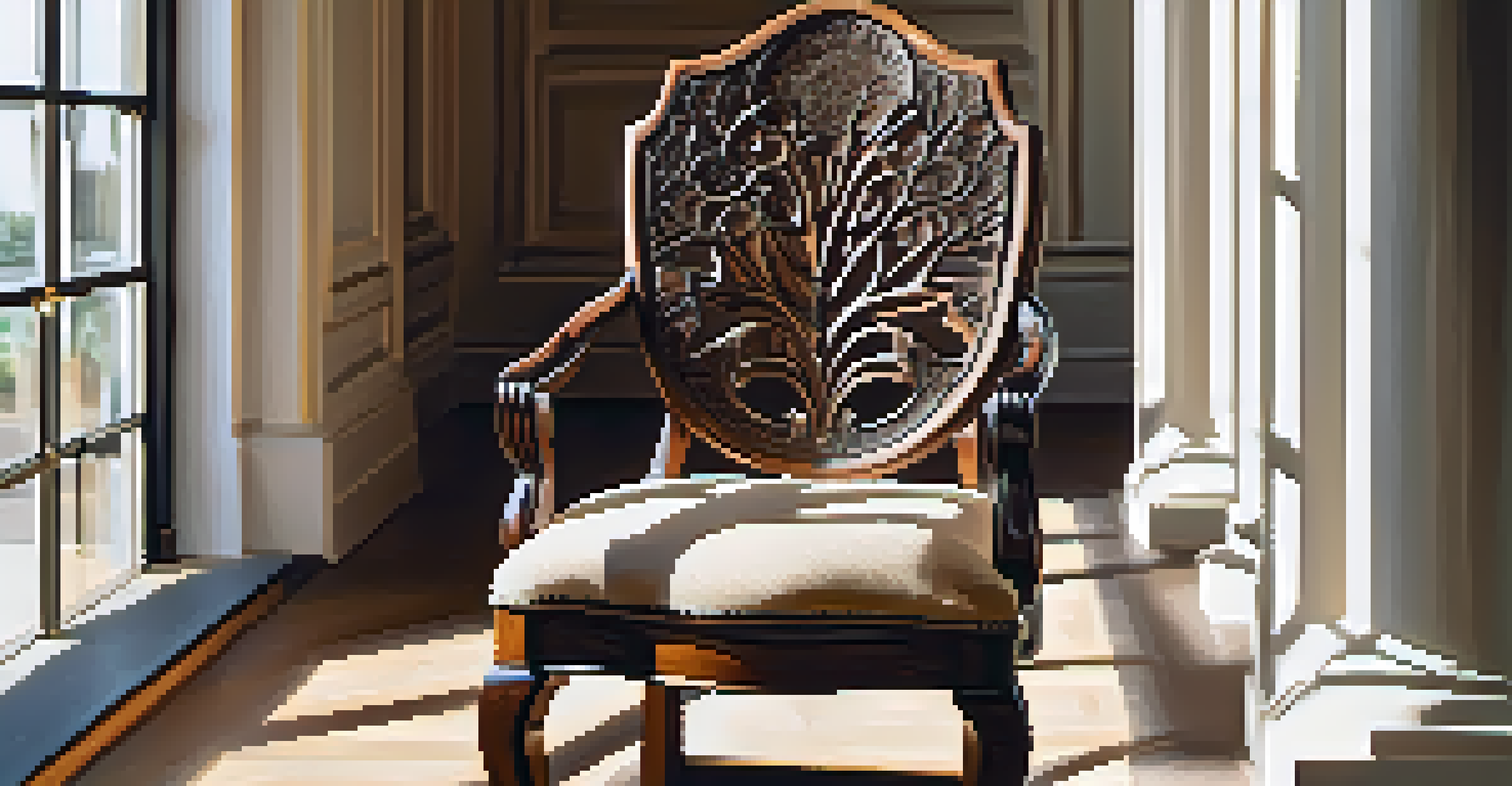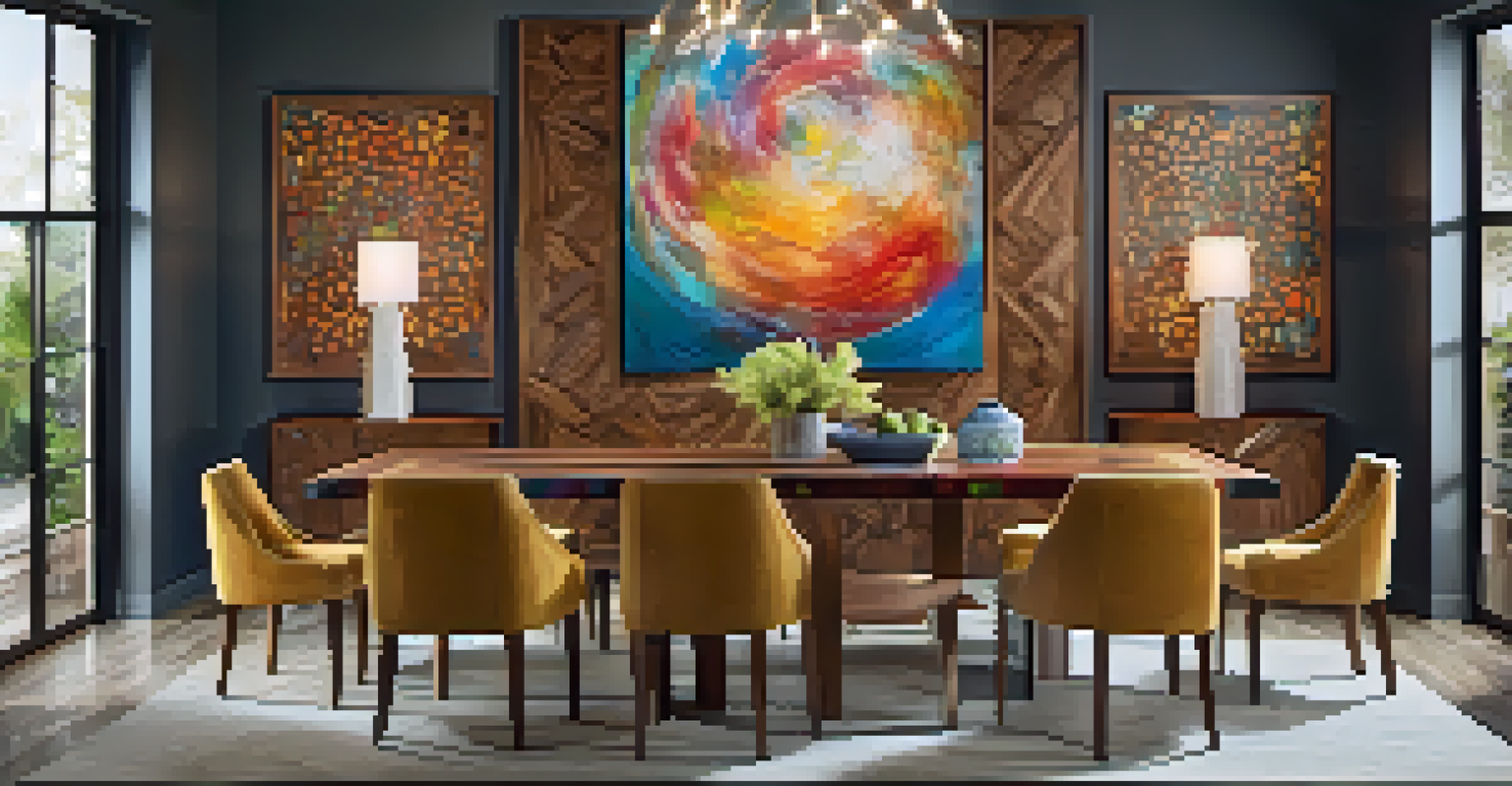Innovative Carving Techniques for Custom Furniture Design

Understanding the Basics of Furniture Carving Techniques
Carving techniques are essential in custom furniture design, allowing artisans to create unique and personalized pieces. At its core, furniture carving involves removing material to create intricate designs, textures, and patterns. By understanding the basics, designers can explore various styles, from traditional to contemporary.
The details are not the details. They make the design.
For beginners, it’s important to start with the right tools, including chisels, gouges, and knives—each serving a specific purpose. Learning the different types of cuts, such as relief carving and chip carving, can help artisans express their creativity effectively. Mastering these fundamentals lays the groundwork for more advanced techniques.
As you delve deeper into furniture carving, consider how each technique can enhance the overall aesthetic of your designs. A well-carved piece can transform a simple table into a stunning focal point in any room. Understanding these basics not only boosts creativity but also improves craftsmanship.
Exploring Relief Carving for Depth and Texture
Relief carving is a popular technique that adds depth and dimension to furniture pieces. This method involves carving a design that stands out from the background, creating a three-dimensional effect. Whether it's floral patterns or geometric shapes, relief carving can significantly enhance the visual appeal of a furniture item.

One of the beauties of relief carving is its versatility. It can be used on various surfaces, from tabletops to cabinet doors, allowing artisans to tailor their designs to specific pieces. By layering different depths of carving, artists can create stunning visual contrasts that invite touch and admiration.
Mastering Carving Basics Matters
Understanding fundamental carving techniques and tools is essential for creating unique and personalized furniture designs.
To get started with relief carving, practice with simple shapes and gradually move to more complex designs. Using templates can help maintain consistency and accuracy. As your skills improve, you’ll find endless possibilities for personalizing furniture through this engaging technique.
Chip Carving: A Simple Yet Elegant Technique
Chip carving is a straightforward yet elegant technique that’s perfect for beginners and experienced artisans alike. It involves removing small chips of wood to create intricate patterns and designs, often featuring symmetrical shapes. This method is especially popular for decorative accents on furniture.
Creativity is allowing yourself to make mistakes. Design is knowing which ones to keep.
The beauty of chip carving lies in its simplicity. With just a few tools and a steady hand, you can create stunning designs that captivate the eye. This technique is often used on flat surfaces, making it ideal for tabletops or drawer fronts, where fine details can shine.
To master chip carving, start with basic patterns and gradually experiment with more complex designs. Utilizing a sharp knife and practicing your technique will help you achieve clean, precise cuts. As you grow more confident, you can incorporate your unique style into each piece you create.
Incorporating Power Tools for Precision Carving
While traditional hand tools are essential for carving, incorporating power tools can elevate your custom furniture design to new heights. Tools such as rotary tools and CNC machines allow for precision and speed, enabling artisans to tackle more intricate projects. This blend of old and new techniques can lead to stunning results.
Power tools can help streamline the carving process, reducing the time it takes to complete a piece. For instance, a rotary tool can quickly remove material and create detailed designs with ease. However, it's important to practice safety and control, as power tools can be unforgiving if misused.
Power Tools Enhance Precision
Incorporating power tools into furniture carving can improve precision and efficiency, complementing traditional hand-carving methods.
As you integrate power tools into your carving routine, consider how they can complement your hand-carving skills. Many artisans find that using both methods provides a unique balance, allowing for creativity and efficiency. This innovative approach can transform your furniture projects and expand your artistic possibilities.
Experimenting with Mixed Media in Furniture Design
Incorporating mixed media into furniture design opens up a world of creative possibilities. By combining carving techniques with other materials—such as metal, glass, or fabric—artisans can create truly unique pieces. This approach not only enhances the aesthetic but also adds functionality and interest.
For instance, you might carve intricate patterns into wood and then inlay colored resin or metal accents to make the design pop. This combination of textures and materials can create a striking visual contrast that captures attention. Experimenting with mixed media can also showcase your personal style and artistic vision.
As you explore mixed media, don’t be afraid to push boundaries and think outside the box. The key is to find harmony among different materials and techniques. This innovative approach can redefine traditional furniture design, making each piece a work of art.
Utilizing Natural Elements for Unique Carving Effects
Nature offers a wealth of inspiration for innovative carving techniques. By incorporating natural elements like bark, knots, or unique wood grains, artisans can create one-of-a-kind designs that celebrate the beauty of the material. These natural features can add character and depth to custom furniture pieces.
For example, a carved table that highlights the natural grain of the wood can become a stunning centerpiece in any room. Embracing these imperfections and natural patterns can lead to beautifully organic designs that resonate with both artisans and owners. This approach not only enhances aesthetics but also honors the craftsmanship involved.
Mixing Media Boosts Creativity
Experimenting with mixed media in furniture design allows artisans to create unique pieces that combine various textures and materials.
When working with natural elements, be mindful of the wood’s unique characteristics. Each piece of wood tells a story, and it’s important to let those stories shine through in your designs. This connection to nature can elevate your furniture pieces and create a lasting impact.
Finishing Touches: Techniques to Enhance Your Carving
The finishing touches on a carved piece of furniture can make all the difference in its overall appeal. Techniques like sanding, staining, and applying finishes can enhance the carved details and bring your vision to life. A well-finished piece not only looks beautiful but also stands the test of time.
Sanding is crucial in achieving a smooth surface that highlights the intricacies of your carving. Different grits of sandpaper can be used to refine the finish, ensuring that every detail stands out. After sanding, applying a stain can add warmth and depth, accentuating the wood grain and carved areas.

Finally, consider protective finishes like varnish or polyurethane to ensure durability. These finishes not only preserve the beauty of your work but also protect it from wear and tear. Paying attention to these finishing techniques can elevate your custom furniture and leave a lasting impression.